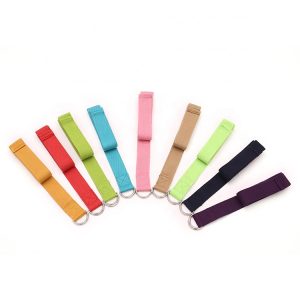When buying a yoga mat, several factors should be taken into consideration to ensure that you choose the one that best suits your needs and preferences. Here is a comprehensive buying guide with essential factors to consider:
- Material:
- PVC: Traditional yoga mats are made from PVC (polyvinyl chloride), which offers good grip and durability but may not be environmentally friendly.
- TPE (Thermoplastic Elastomer): TPE mats are more eco-friendly and free from harmful chemicals. They provide good cushioning and grip.
- Natural Rubber: Rubber mats are biodegradable and offer excellent grip and cushioning, making them suitable for various yoga styles.
- Cork, Jute, and Cotton: These natural materials are eco-friendly and provide unique textures and benefits. Cork and jute are non-slip, while cotton is soft and comfortable.
- Thickness:
- Standard thickness is around 1/8 inch (3mm), offering a balance of cushioning and stability.
- Thicker mats (1/4 inch or more) provide extra cushioning, making them ideal for sensitive joints and more comfortable during long practices.
- Thinner mats (1/16 inch or 1.5mm) are more portable and suitable for those who prioritize a closer connection to the ground.
- Texture and Grip:
- Look for a mat with a textured or non-slip surface to provide a secure grip and prevent slipping during practice, especially in sweaty conditions.
- Size:
- Standard size is around 68 inches long and 24 inches wide. Consider longer or wider mats if you need more space or if you are taller.
- Weight and Portability:
- If you plan to carry your mat frequently, opt for a lightweight and portable mat that is easy to transport.
- Eco-Friendliness:
- Choose eco-friendly materials if you are conscious of environmental impact. Look for mats made from biodegradable, recycled, or sustainable materials.
- Odor:
- Some mats may have a strong odor when new, especially PVC mats. Consider airing out the mat before use if you are sensitive to smells.
- Price:
- Set a budget that aligns with your needs and preferences. There are options available at various price points, from budget-friendly to high-end mats.
- Durability:
- Check customer reviews and product descriptions for information on the mat’s durability and how well it holds up over time.
- Cleaning and Maintenance:
- Consider the ease of cleaning and maintaining the mat. Look for mats that are easy to wipe down and air dry.
- Aesthetics:
- Choose a design or color that you find visually appealing and that resonates with your personal style.
- Brand and Reviews:
- Consider the reputation of the brand and read customer reviews to gain insights into the mat’s performance and quality.
By considering these factors, you can make an informed decision and find a yoga mat that enhances your practice, supports your needs, and provides a comfortable and stable surface for your yoga journey.








